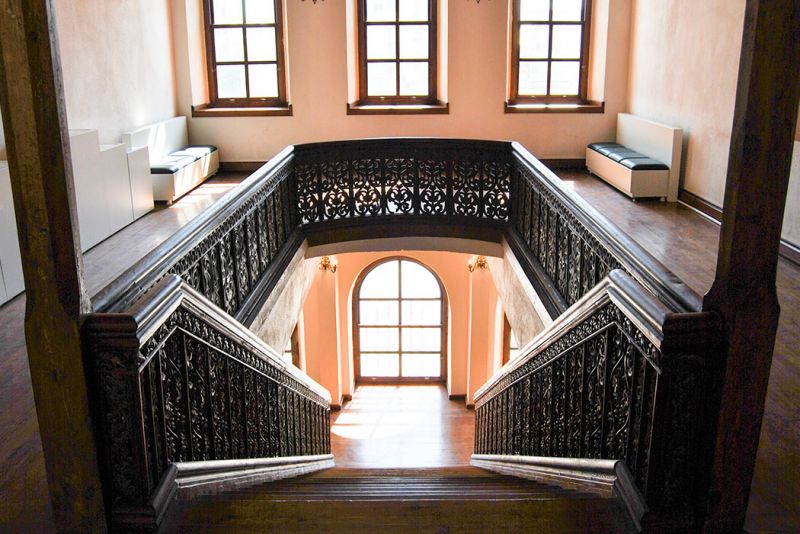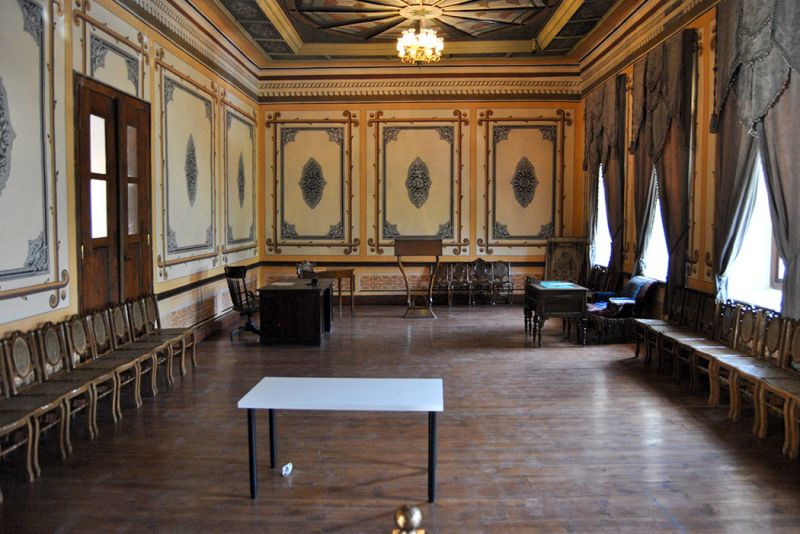Ataturk Congress and Ethnography Museum of Turkey
The building that was used because the “National Struggle Headquarters” between 2nd September - 18th December 1919 by the Representative Committee and solon Atatürk, has an exceptional and important place within our Republic's history.
Used as the headquarters of the National Struggle for Independence in 1919, this building at the city center was turned into a museum to commemorate its historical role.
The documents pertaining to Ataturk and the Sivas Congress, together with the ethnographic items are displayed on the two floors of the museum. The rooms that witnessed Congress are preserved intact.
Tourism in Ataturk Congress and Ethnography
This building, which is an example of the 19th Century late Ottoman period civilian architecture, is three-storey and has an inner courtyard. Stone on the outside facade and timber was the most material employed in the development of the building.
The building that was assigned to Kemal Ataturk Atatürk and his friends for 3 and a half months because the headquarters; for “holding Sivas Congress meetings” for proving to whole world that the “national power of will and determination” was above of all the pressure, above of all personal or group governing, for organizing the “National Struggle movement within the Anatolia” and “foundation of the Republic,” received a historical identity.
Thirty-two delegates representing nineteen provinces participated in the Sivas Congress. But because of delegates selected from other provinces and joined to the congress these numbers varied. The building which functioned as a highschool since it absolutely was constructed was respectively called Idadi, Sultani, Sivas Lisesi and Congress Lisesi (all meaning high school).
With the alteration made in 1930 the doorway that was originally at the east was moved to the western facade and also the roof was covered with plate iron. The building that served as school until 1981, with the directives of the President Kenan Evren, had been planned to alter into a museum.
The final Directorate of Antiquities and therefore the Museums of our Ministry started its restoration the same year to alter it into a museum. At the top of the restoration, display and arrangement works; the basement rearranged on have warehouses, laboratory and photoshop, the bottom floor arranged as Ethnographical museum and also the top floor arranged as Atatürk and Congress museum.
Between the dates 4 - 12 September 1919, the building's school hall, where Kemal Pasha Atatürk and also the Representative Committee used because the headquarters, held the Sivas Congress meetings.
The historical Congress Hall and therefore the study and toilet belonging to Atatürk are preserved as they were in those days. In the above floor, an oversized room where pre-congress documents, the circulars and also the notices of Mustafa Kemal Atatürk for the congress preparations were displayed.
Also on the identical floor, the foremost important thing of its time, the idea of the communications, the telegraph room; the space where the minutes of the congress are displayed; an outsized room where the announcements and therefore the documents containing various news of the “Anatolian Women's Defence of the Country Society” that was established in Sivas and also the copies of “The National Will” newspaper and its machine are often visited.
All the documents regarding decisions taken during and after the Sivas Congress; the copies of Atatürk’s special archives at the Presidential Palace, the special archive of the attache’s and therefore the Military History Commission of the overall Staff Headquarters and also the archives of the Directorate of the Atatürk Research Centre are exhibited within the museum.

The Ethnographical Works Section
The building that was built in 1892 by the Sivas Governor Memduh Pasha is one in every of the samples of the late 19th century civilian architecture of the Ottoman period. it's a three-storey building with an inner courtyard. Stone on the outside facade and timber was the most material utilized in the development.
The building, which was a highschool during the time utilized by Solon Atatürk and also the Representative Committee, received a historical identity due to the Sivas Congress meeting held between 4 - 12 September. The building was used again as a college until the year 1981.
After repairing and reorganizing for exhibition, it absolutely was opened as a museum to visitors in 1990. In the top floor, the Congress hall, the study and bathroom of Atatürk are redecorated and kept as within the days of the congress. On the same floor there are areas where documents associated with congress are exhibited. The ground floor is totally separated for goods having ethnographical characteristics.
Armoury Section
Various war weapons like swords, daggers, armours, helmets, shields, arrows, bows, matchlock rifles, pistols, flintlock rifles of the Ottoman period are exhibited within the armoury.
Kilims Section
Kilims, prayer rugs and other small rug samples are displayed during this section. Also, the wooden minbar of the historical Divrigi Castle mosque, from the year 1180, is exhibited during this section.

Sivas Basoda (guest room)
The space where the guests are treated with respect within the Sivas mansions during the Ottoman time. It absolutely was redecorated with a fireplace, embroidered curtains, sitting areas with divans, and cushions. Mannequins also are utilized in the display. Some wooden articles from the Ulu Mosque of Divrigi also are exhibited during this room.
Copper Articles Section
Such articles like large copper or brass trays, long-spouted pitchers, metal canteens, large copper dishes, cooking pans, skimmers, candle holders and a few samples of fountain spouts, various weights of its time, locks, door knockers are a number of the opposite articles that may be seen.
Dervish Lodge Articles Section
A number of the articles of Dervish lodges like flags, leather knives, spits, rosary, candles, service beads, tambourines and bells are exhibited during this section.
Handworks and Garments
Various garments such as handkerchiefs, embroidered jackets and praying rugs, towels, bundles unique to Sivas region are exhibited in three different large rooms. Also, some wearing apparel are displayed to visitors on mannequins in the showcases placed in the middle of the rooms. The centre courtyard of the museum building is arranged as the carpet section. The carpets of the Sivas region are displayed in chronological order.
The fourteen windows situated in the corridor and looking to the courtyard were changed into shop windows and in them coffee sets, silver jewelleries, handwritten and calligraphic art works, glass and porcelain articles, lamps are exhibited.
If you are interested in different tours to Istanbul, BE READY for the following Amazing tours.
